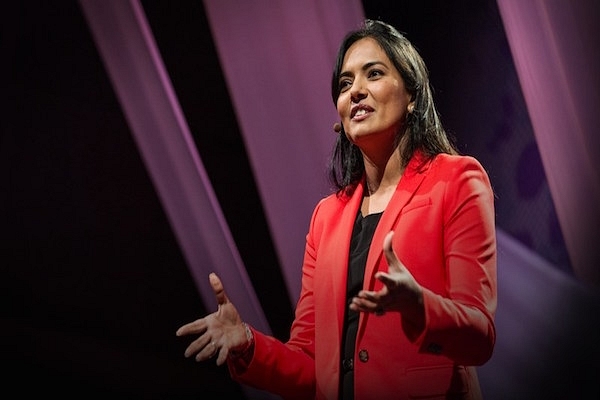Videos
Video: How To Fix A Broken Education System Without Spending More Money
- In this insightful TED talk, Seema Bansal describes her experiences transforming the public education system in Haryana without having to pool in more money.

Image Credit: TED
Many of us believe that changing government systems for the better is a tough, if not impossible, task, largely because we perceive government bodies as archaic and bureaucratic.
But Seema Bansal, Partner at the Boston Consulting Group’s Social Impact practice in India, counters this age-old notion in her insightful TED Talk. She offers the example of a large government system, in the Indian state of Haryana, which through small, consistent changes has caused a massive overhaul of the education sector.
Things aren’t rosy with the Indian public education system, as many of you already know. When you walk into a public school, you see teachers, many of whom are capable and qualified - contrary to popular belief that government schools don’t have qualified staff, or that they don’t attend school regularly - but they work on matters not related to teaching. They are seen supervising the construction of the school toilet or the preparation of the midday meal.
When asked why, a single response emerged, says Seema.
So over the years, as the government launched several programmes to improve student enrollment and enhance facilities at the school, teaching staff became implicitly involved in the execution of reforms within the system. Naturally, their focus shifted away from teaching.
But ultimately, a teacher’s job is to teach students. That is the area where they can make the most difference, not in looking after infrastructure or reforming the system.
Next, not wanting to reinvent the wheel, Seema and her team started to look around for solutions to the problems ailing the education sector. She found that many NGOs had come up with innovative ideas and done great work in, say, about 50 to 100 schools, but hadn’t been able to scale up that figure.
When working on a limited number of schools, the NGOs brought in their resources, whether it was money, people, or infrastructure. But coming up with resources for reforming, say, as many as 15,000 schools is harder. Where would the additional resources come from?
That’s when it occurred to Seema that whatever solutions were being applied to the problems in the education sector had to be scalable. Being restricted by resources was not an option.
Then, Seema and her team started thinking about scalable solutions. After spending long hours racking their brains at the office, cafés, and bars, they came up with many significant ideas.
For instance, the team felt that the learning process needed to be more hands-on; the efficacy of this method has already been proved worldwide. Bookish knowledge can only do so much. So teachers in schools in Haryana turned to fun and engaging activities for students after class so they could absorb knowledge better.
Teachers could also innovate in learning practices and come up with their methods. But, if each teacher came up with their unique method, wouldn’t it be beneficial if it could be shared with teachers and students across different schools?
Yes, but another problem emerged. How does one connect 15,000 schools with one lakh teachers?
The standard process would be a top-down method, where an official letter would be passed down from the top officials to the districts and then the blocks. It would be hoped that someone would read the letter, understand it, and then pass it on till it was implemented in every school. The use of computer technology could have solved this “Chain of Hope” conundrum, as Seema Bansal calls it, but then most schools didn’t have a computer.
However, what the staff at these schools did have were smartphones. So each of these staff members became a part of different Whatsapp groups, where a quick and easy back-and-forth was easily possible.
Because of the use of such measures, teachers in Haryana are now focused purely on teaching and coming up with different ways to help kids learn better.
During assessments, supervisors not only come to check the state of the facilities at school but also to check on the quality of teaching. Students are assessed quarterly based on their learning outcomes and the schools performing well are rewarded.
This transformation of the school system in Haryana took place in less than three years. It is a remarkable achievement, considering that most people would assume it would take seven to ten years at least to change things.
Watch the video here:
Support Swarajya's 50 Ground Reports Project & Sponsor A Story
Every general election Swarajya does a 50 ground reports project.
Aimed only at serious readers and those who appreciate the nuances of political undercurrents, the project provides a sense of India's electoral landscape. As you know, these reports are produced after considerable investment of travel, time and effort on the ground.
This time too we've kicked off the project in style and have covered over 30 constituencies already. If you're someone who appreciates such work and have enjoyed our coverage please consider sponsoring a ground report for just Rs 2999 to Rs 19,999 - it goes a long way in helping us produce more quality reportage.
You can also back this project by becoming a subscriber for as little as Rs 999 - so do click on this links and choose a plan that suits you and back us.
Click below to contribute.
Latest